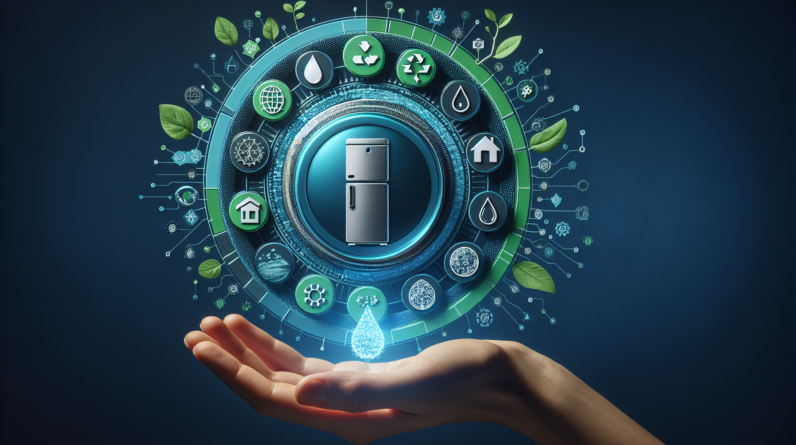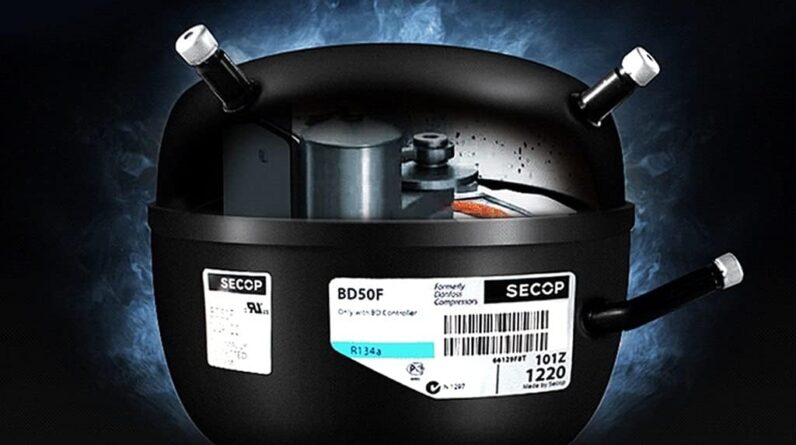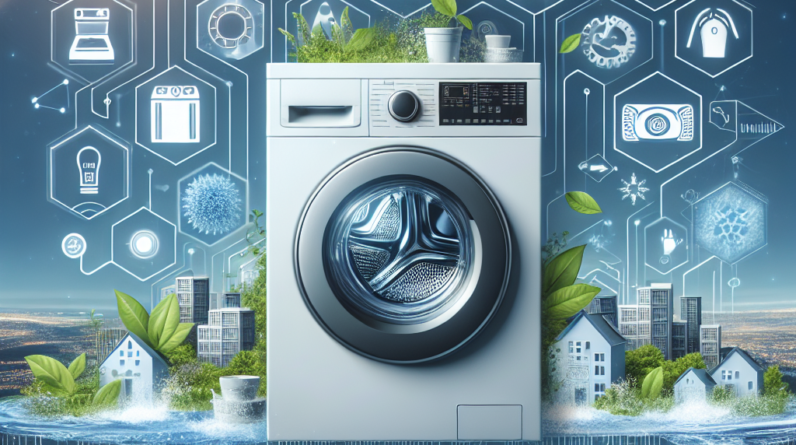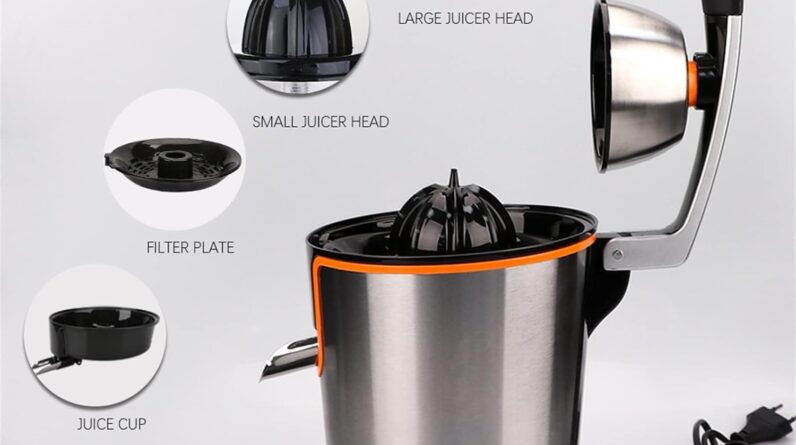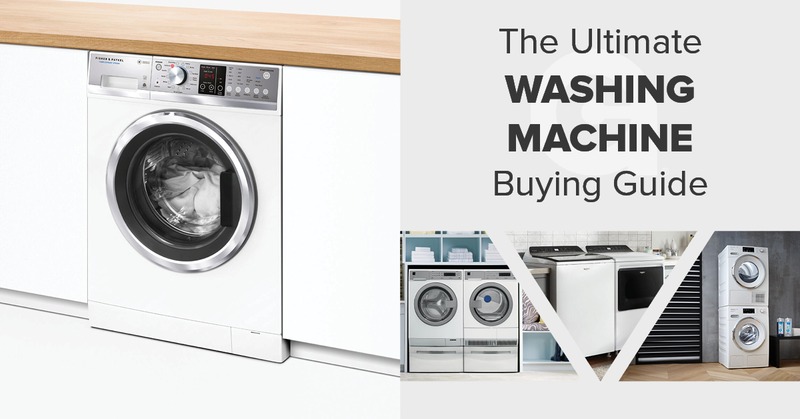
Are you in the market for a new washing machine but feeling overwhelmed by the countless options available? Fear not, because this ultimate guide is here to help you navigate the world of washing machines and find the perfect one for your needs. From understanding different types and features to considering factors such as capacity, energy efficiency, and budget, this comprehensive guide will equip you with all the knowledge you need to make an informed decision and ensure that your laundry routine remains a breeze.
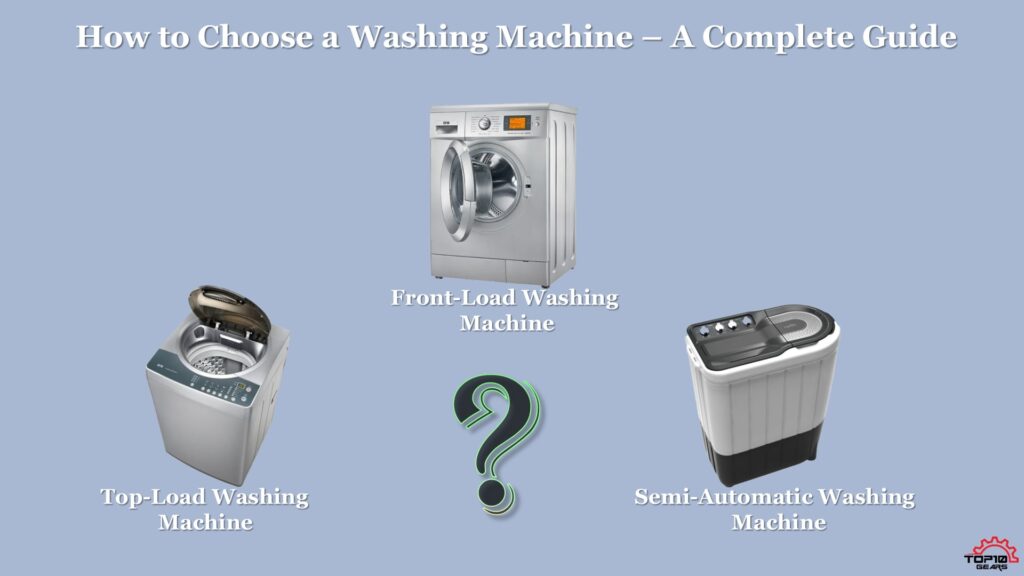
This image is property of top10gears.com.
Capacity
Determining your laundry load
When selecting a washing machine, it is essential to assess your laundry load to determine the appropriate capacity for your needs. Consider how often you do laundry and the average size of your loads. If you have a small household or do laundry infrequently, a machine with a lower capacity may be sufficient. On the other hand, larger households or those with more frequent laundry needs may require a machine with a larger capacity to accommodate larger loads.
Understanding machine capacity
Machine capacity refers to the maximum weight of laundry that the washing machine can handle in one cycle. It is typically measured in kilograms or pounds. It is crucial to choose a machine with a capacity that suits your laundry needs. Oversized machines may be inefficient for smaller loads, while undersized machines can lead to overloading and inadequate cleaning. Understanding your laundry load will help you make an informed decision about the capacity of your washing machine.
Considerations for small households
For small households, such as singles or couples, a washing machine with a capacity ranging from 6 to 8 kilograms (or 13 to 18 pounds) would typically suffice. This capacity is suitable for regular loads of clothing, bedsheets, and towels. It is important to strike a balance between having enough capacity to handle your laundry needs and not wasting water and energy on oversized machines.
Considerations for large households
Large households, including those with multiple family members or children, should consider washing machines with capacities of 9 kilograms (20 pounds) or more. These machines can handle larger loads, reducing the number of cycles required and saving time and energy. It is advisable to choose a machine that comfortably accommodates your busiest laundry days to ensure efficient cleaning without overloading the machine.
Types of Washing Machines
Top-loading machines
Top-loading machines are a popular choice, known for their convenient loading mechanism. With a top-loading machine, you can easily add or remove laundry even mid-cycle. They are generally more cost-effective and have faster wash cycles compared to front-loading machines. However, they require more water to operate and may not be as energy-efficient.
Front-loading machines
Front-loading machines have gained popularity due to their energy efficiency and superior cleaning performance. They use gravity to tumble the laundry, requiring less water and detergent. Front-loading machines also have higher spin speeds, resulting in better water extraction and shorter drying times. However, they are usually more expensive than top-loading machines and may require additional maintenance, such as regular cleaning of the door seal.
Semi-automatic machines
Semi-automatic machines are an economical option, particularly in regions where access to a continuous water supply may be limited. These machines feature separate wash and spin tubs, allowing you to transfer the laundry manually between cycles. While they may require more effort in terms of manual labor, they can be an excellent choice for those on a tight budget.
Fully automatic machines
Fully automatic machines do not require manual intervention between cycles. They offer the convenience of automatically completing the entire wash cycle, including the wash, rinse, and spin. These machines are available in both top-loading and front-loading variants, with a wide range of features and capacities to choose from. While they are more expensive than semi-automatic machines, they offer convenience and time-saving benefits.
Combination machines
Combination machines, also known as washer-dryer combos, offer the convenience of washing and drying in a single unit. These machines are ideal for small spaces or where separate washing and drying units are not feasible. However, it is important to consider that the drying function may take longer compared to standalone dryers, and the capacity for drying may be smaller than the washing capacity.
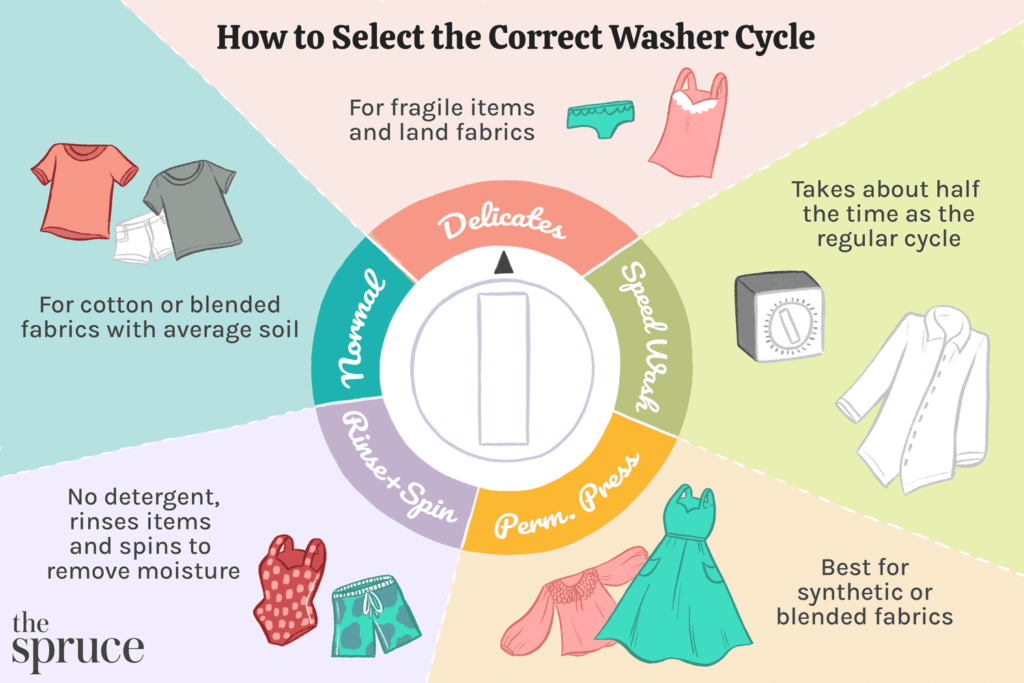
This image is property of www.thespruce.com.
Energy Efficiency
Understanding energy efficiency ratings
Energy efficiency ratings help consumers assess the energy consumption of washing machines. These ratings are typically displayed as a label on the machine, with a scale from A+++ (highest efficiency) to D (lowest efficiency). Choosing a washing machine with a higher energy efficiency rating can contribute to significant energy savings over time.
Comparing energy consumption
Energy consumption can vary significantly between different washing machines. When comparing models, look for machines that have energy-saving features such as adjustable temperature controls, load sensors, and eco-friendly wash programs. These features can help reduce energy consumption during the wash cycle, resulting in lower utility bills.
Eco-friendly and energy-saving features
Many modern washing machines come equipped with eco-friendly and energy-saving features. Look for machines that offer options for shorter wash cycles, cold water settings, and load sensing technology. These features can help reduce energy consumption without compromising on the cleanliness of your laundry. Choosing an eco-friendly washing machine not only benefits the environment but also helps you save money on your energy bills.
Long-term cost savings
Investing in an energy-efficient washing machine may require a higher upfront cost, but it can result in long-term cost savings. By reducing energy consumption and water usage, you can significantly lower your monthly utility bills. Over time, the cost savings from an energy-efficient machine can offset the initial investment, making it a financially wise decision.
Wash Programs and Features
Standard wash programs
Washing machines come with a variety of standard wash programs to cater to different types of laundry. These programs usually include options for delicate fabrics, cotton, synthetic materials, and mixed loads. Standard wash programs allow you to customize the wash cycle based on the specific needs of your laundry, ensuring optimal cleaning results.
Specialized wash programs
In addition to standard wash programs, some washing machines offer specialized wash programs designed for specific types of clothing or laundry requirements. These programs may include options for baby clothes, sportswear, wool, or heavily soiled items. If you have specific laundry needs, such as gentle treatment for delicate fabrics or intensive stain removal, considering a washing machine with specialized wash programs can be beneficial.
Temperature control
Temperature control is an important feature to look for in a washing machine. Different fabrics and stains require specific temperature settings for effective cleaning. Look for machines that offer adjustable temperature controls, allowing you to select the desired temperature for each wash. This feature ensures that your laundry is cleaned effectively without risking damage to delicate fabrics.
Spin speed options
Spin speed refers to the number of revolutions per minute (RPM) at which the machine’s drum spins during the spin cycle. Higher spin speeds result in better water extraction, reducing the time required for drying. Machines with adjustable spin speed options allow you to customize the spin cycle based on the specific fabric and laundry requirements. While higher spin speeds can be beneficial for most laundry, delicate fabrics may require lower spin speeds to prevent damage.
Delay start and timer functions
Washing machines with delay start and timer functions offer added convenience and flexibility. These features allow you to set the machine to start the wash cycle at a later time, accommodating your schedule. Timer functions also enable you to estimate the remaining time for a cycle, allowing you to plan your activities accordingly. Consider these features if you prefer to have control over when your laundry cycle starts and ends.
Add-on features like steam or allergen removal
Some advanced washing machines offer add-on features such as steam cycles or allergen removal programs. Steam cycles can help remove tough stains or wrinkles, while allergen removal programs are designed to eliminate allergens and bacteria from fabrics. If you have specific needs such as allergy prevention or wrinkle-free clothing, these add-on features can be a valuable addition to your washing machine.

This image is property of static.appliancesconnection.com.
Water Consumption
Evaluating water usage
Water consumption is an important factor to consider when selecting a washing machine. Look for machines that have water-efficient technologies, such as load sensors that determine the optimal water level based on the laundry load. These machines can help minimize wastage of water and reduce your environmental impact.
Considerations for areas with water scarcity
In regions with limited water availability or facing water scarcity issues, it is crucial to choose a washing machine that is specifically designed for water efficiency. Look for machines that offer water-saving modes, low water consumption ratings, and the ability to recycle and reuse water for future cycles. By choosing a washing machine that is mindful of water consumption, you can contribute to conserving this valuable resource.
Water-efficient technologies
Modern washing machines often incorporate water-efficient technologies to minimize water consumption. Look for machines with features such as automatic load sensing, which adjusts the water level according to the size of the load, or dual water inlet design, which allows separate water inlets for washing and rinsing. These technologies help optimize water usage and ensure effective cleaning while conserving water.
Noise and Vibration
Decibel ratings
The noise and vibration levels of a washing machine can significantly impact your living environment. The noise level of a washing machine is measured in decibels (dB) and is typically indicated on the machine or in the product specifications. Lower decibel ratings indicate quieter operation. Look for machines with low decibel ratings if you live in close proximity to living spaces or have noise sensitivity concerns.
Anti-vibration technologies
Washing machines equipped with anti-vibration technologies help minimize noise and vibration during operation. These technologies include features such as reinforced frames, shock absorbers, or specialized drum designs that reduce movement and noise. If noise and vibration are a concern in your living space, look for machines that offer these anti-vibration features for a quieter and more comfortable laundry experience.
Quiet operation
Some washing machines are specifically designed to operate quietly, ensuring minimal disturbance to your daily activities. These machines are built with noise-reducing features, including insulation layers and optimized motor designs. If you value a quiet environment, particularly during nighttime or when you have young children, selecting a washing machine that prioritizes quiet operation can enhance your overall living experience.
Location and noise concern considerations
Consider the location of your washing machine within your living space and any potential noise concerns. If your laundry area is close to bedrooms or living areas, selecting a washing machine with noise reduction features or low decibel ratings can help minimize disruption. Additionally, consider the type of flooring or installation surface, as vibrations can be amplified on certain setups, leading to increased noise levels.

This image is property of oxygendigitalshop.com.
Size and Installation
Measuring available space
Before purchasing a washing machine, it is essential to measure the available space in your laundry area. Consider the width, height, and depth required to accommodate the machine. Ensure that you have enough space for the machine’s door to open fully and that there is ample room for ventilation. Taking accurate measurements will help you select a machine that fits perfectly in your designated laundry space.
Standard machine dimensions
Washing machines come in various sizes, but standard dimensions are typically available for both top-loading and front-loading machines. Top-loading machines are generally narrower and require less depth compared to front-loading machines. Ensure that you choose a machine that fits within your available space without compromising on the ease of access.
Stackable or portable options
If you have limited space, consider stackable or portable washing machine options. Stackable machines are designed to be stacked on top of a compatible dryer, saving valuable floor space. Portable washing machines are compact and lightweight, making them ideal for small apartments or spaces without dedicated laundry areas. Evaluate your space limitations and explore these alternative options for convenient and space-efficient laundry solutions.
Considerations for retrofitting
When retrofitting a washing machine into an existing laundry area, ensure that you account for any modifications or adjustments required. Consider factors such as plumbing and electrical connections, ventilation requirements, and any necessary structural changes. It may be helpful to consult with a professional to ensure a seamless installation process and compliance with safety regulations.
Plumbing and electrical requirements
Before purchasing a washing machine, consider the plumbing and electrical requirements for installation. Ensure that your laundry area has the necessary water supply connections and drainage outlets. Additionally, confirm that the electrical supply in your home is compatible with the voltage and power requirements of the machine. Taking these factors into account will help you avoid any installation complications or additional expenses.
Budget
Determining your budget
Establishing a budget is an important step in selecting the right washing machine for your needs. Consider how much you are willing to spend based on your financial circumstances. It is essential to strike a balance between the features, capacity, and quality you desire and the budget you have allocated for the purchase.
Price range and affordability
Washing machine prices can vary widely depending on the brand, capacity, features, and efficiency ratings. Research the market to understand the price ranges for washing machines that meet your criteria. Consider the long-term cost savings associated with energy-efficient models to determine the affordability of a particular machine.
Long-term cost considerations
When evaluating washing machines, it is important to consider the long-term cost implications beyond the initial purchase price. Energy-efficient machines with low water consumption can result in significant savings on utility bills over time. Additionally, reliable machines with longer lifespans may require fewer repairs or replacements, minimizing maintenance and replacement costs.
Value for money
When selecting a washing machine, prioritize value for money over the cheapest option. A lower-priced machine may have limited features, lower efficiency ratings, or shorter lifespans, ultimately costing you more in the long run. Consider the overall value and quality of the machine, along with its price, to ensure a worthwhile investment that meets your needs.

This image is property of top10gears.com.
Brand and Reliability
Researching reputable brands
Before finalizing your purchase, research reputable brands known for manufacturing reliable and durable washing machines. Look for brands with a proven track record of delivering high-quality products and excellent customer service. Online resources, consumer reviews, and recommendations from friends and family can be valuable sources of information when assessing the reliability of a particular brand.
Consumer reviews and ratings
Consumer reviews and ratings provide insights into the experiences of others who have purchased and used a specific washing machine model. Read reviews from trusted sources to gather information about performance, reliability, and customer satisfaction. Consider both positive and negative reviews to make an informed decision about the reliability and suitability of a particular machine.
Warranty and after-sales support
Check if the washing machine you are considering comes with a warranty. A warranty offers assurance and protection in case of any defects or malfunctions within the warranty period. Additionally, inquire about the availability of after-sales support, including maintenance services, spare parts availability, and customer helplines. A brand that provides comprehensive warranty coverage and reliable after-sales support adds value to your purchase.
Service availability
Consider the availability of authorized service centers or technicians in your area before purchasing a washing machine. Prompt and reliable service is important in case of any repairs or maintenance requirements. Choosing a well-established brand with a wide service network can ensure that you have convenient access to professional assistance whenever needed.
Additional Factors
Design and aesthetics
The design and aesthetics of a washing machine can play a role in enhancing your laundry area’s overall look and feel. Consider the color, finish, and overall design aesthetics that complement your personal preferences and home décor. While aesthetics should not be the sole determining factor, choosing a washing machine that aligns with your style preferences can enhance your laundry experience.
User-friendly controls
Ease of use is an important consideration when selecting a washing machine. Look for machines with user-friendly controls and intuitive interfaces. Clear labeling, responsive buttons, and easy-to-understand settings make the operation more convenient. Some machines feature digital displays or touch-sensitive controls for a modern and streamlined user experience.
Maintenance and cleaning
Regular maintenance and cleaning are essential for the longevity and optimal performance of your washing machine. Consider machines that are designed with features to simplify maintenance, such as self-cleaning cycles or removable lint filters. Easy access to components, such as the drum or detergent dispenser, can also make cleaning and maintenance tasks more manageable.
Smart technology integration
With advancements in technology, some washing machines now offer smart features and integration with mobile devices. These features may include remote control capabilities, notifications for cycle completion, or compatibility with smart home systems. If you are inclined towards smart home automation or appreciate the convenience of remote control, look for washing machines that offer these advanced features.
Safety features
Safety should be a top priority when selecting any home appliance, including washing machines. Look for machines that have safety features such as child lock mechanisms, water overflow protection, or automatic shut-off in case of malfunction. These features ensure a safe laundry experience and provide peace of mind, especially if you have young children or pets in the household.
Selecting the right washing machine for your needs requires careful consideration of various factors. By assessing your laundry load, understanding different machine types, evaluating energy efficiency, and considering factors like water consumption, noise, size, budget, brand reliability, and additional features, you can make an informed decision. Remember to prioritize your specific requirements, whether it’s capacity, energy-saving features, or user-friendly controls, to find a washing machine that effectively meets your needs and provides you with clean and fresh laundry every time.
